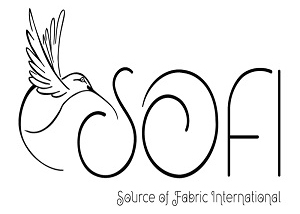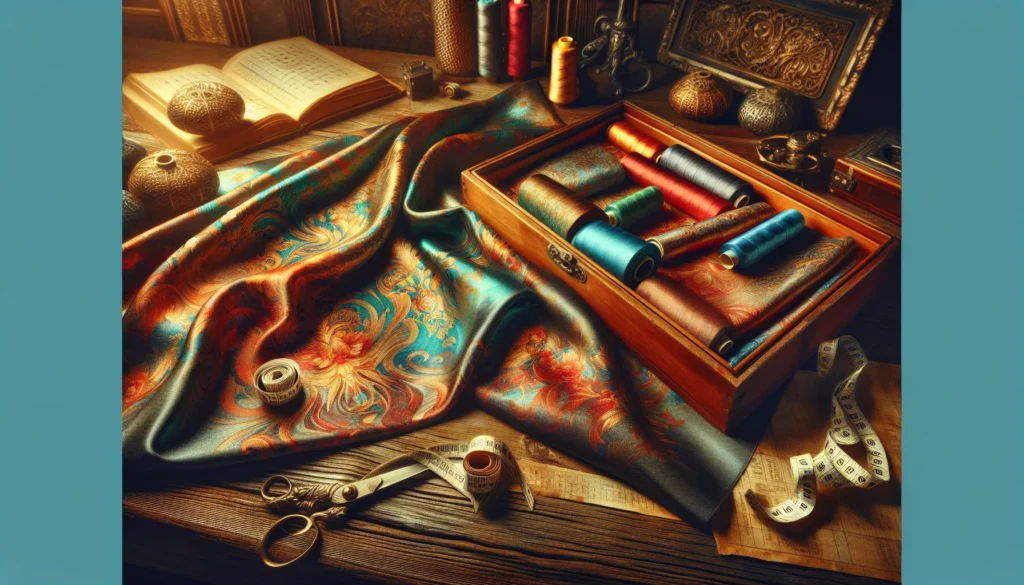Silk fabric has captivated fashion enthusiasts and designers alike for centuries. Its luxurious texture and natural sheen make it a timeless choice for everything from elegant evening gowns to everyday wear. When you think of silk, you might picture opulence and sophistication, but it also offers versatility that suits various styles and occasions.
In this article, you’ll explore the allure of 100% silk fabric, uncovering its unique properties and benefits. You’ll learn why it’s a staple in wardrobes around the world and how to care for it to ensure longevity. Whether you’re a seasoned seamstress or just someone looking to elevate your style, understanding silk will help you make informed choices that enhance your wardrobe. Get ready to dive into the world of silk and discover how this exquisite fabric can transform your fashion game.
Understanding 100 Silk Fabric
100% silk fabric represents the highest quality silk available, made entirely from silkworm cocoons. This fabric boasts a luxurious softness and smooth appearance, making it sought after in the fashion industry.
What Is 100 Silk Fabric?
100 silk fabric consists entirely of silk fibers, derived from silkworm cocoons. This purity differentiates it from silk blends, which may contain synthetic fibers or other materials. High-quality silk fabric feels soft and has a natural sheen. Consider this fabric a premium option for various applications, including clothing, accessories, and home décor.
Characteristics of 100 Silk Fabric
100 silk fabric exhibits several distinctive features. First, the texture of pure silk is incredibly smooth and lightweight, providing comfort and a luxurious feel against the skin. Second, silk possesses a natural sheen that reflects light beautifully, enhancing its visual appeal. Third, this fabric drapes well, allowing for graceful movement in garments. Additionally, silk has a natural ability to regulate temperature; it keeps you cool in warm weather and warm in cooler conditions. Lastly, silk is hypoallergenic, making it suitable for sensitive skin.
Benefits of Using 100 Silk Fabric
100 silk fabric offers numerous advantages that make it an excellent choice for fashion items. First, the luxurious feel of silk elevates any outfit, adding sophistication. Second, silk is highly breathable, ensuring comfort during wear. Third, this fabric retains dye well, resulting in rich and vibrant colors that last. Fourth, silk resists wrinkles, allowing garments to look sharp even after hours of wear. Finally, the durability of silk ensures longevity, providing value over time. Investing in 100% silk items enhances both style and comfort in your wardrobe.
Choosing the Right 100 Silk Fabric
Choosing 100% silk fabric involves understanding its types and identifying genuine silk characteristics. This knowledge ensures you select the best fabric for your needs.
Different Types of Silk Fabrics
Silk fabric comes in several types, each offering unique qualities. Common types include:
- Mulberry Silk: Known for its smooth texture and durability. It derives from silkworms that feed on mulberry leaves. Ideal for high-quality garments.
- Tussah Silk: Made from wild silkworms. It has a more textured surface and a natural golden hue. Suitable for a rustic look in fashion items.
- Charmeuse: A luxurious weave that provides a shiny front and a matte back. Perfect for evening wear and draped styles.
- Duchess Satin: Heavier and more structured. Often used in formal gowns and tailored pieces, offering a rich appearance.
- Chiffon: Lightweight and sheer. Works well for layering and flowing garments, adding a soft and romantic touch.
Understanding these types helps you select the right silk for specific applications, ensuring an ideal blend of comfort and style.
How to Identify Genuine Silk
Identifying genuine silk is essential for making a wise purchase. Look for these key indicators:
- Feel: Authentic silk feels smooth and cool against your skin. It has a luxurious touch compared to synthetic alternatives.
- Shine: Real silk has a natural sheen that reflects light beautifully. Synthetic silk often looks overly shiny or plastic-like.
- Burn Test: When you burn a small thread, real silk produces a smell similar to burnt hair and turns to ash. Synthetic fibers will melt and emit a chemical odor.
- Price: Genuine silk is typically more expensive. If a deal seems too good to be true, it probably is.
- Manufacturer Label: Check the label for terms like ‘100% silk’ or ‘pure silk.’ This ensures the fabric meets authenticity standards.
By paying attention to these signs, you can confidently choose natural and genuine silk for your wardrobe.
Care and Maintenance of 100 Silk Fabric
Proper care ensures the longevity and beauty of 100% silk fabric. Following these guidelines preserves the fabric’s quality and texture.
Washing 100 Silk Fabric
Washing 100% silk fabric requires careful attention. Hand washing is the preferred method. Fill a basin with lukewarm water and add a few drops of mild detergent. Swirl the water gently to mix the detergent. Submerge the silk item, allowing it to soak for 3 to 5 minutes. Avoid scrubbing, twisting, or wringing the fabric. After soaking, rinse the silk thoroughly with cool water until all detergent is removed.
Machine washing is possible but risky. Use a delicate cycle with cold water and place the silk item in a mesh laundry bag to prevent snagging. Use a gentle detergent specifically for silk or delicates.
Drying 100% silk requires special care. Avoid direct sunlight and high heat, as these can damage the fibers. Lay the silk flat on a clean, dry towel and gently roll it to remove excess water. Air drying in a shaded area is recommended.
Ironing may be necessary if wrinkles occur. Use a low heat setting and place a cotton cloth between the iron and silk to prevent direct contact. Always test a hidden area first to ensure there is no damage.
Maintain the luxurious feel and appearance of 100% silk through proper washing practices.
Drying Techniques for Silk
Correct drying techniques for silk ensure that this delicate fabric maintains its beauty and integrity. Follow these methods to effectively dry 100% silk items.
- Gently Remove Excess Water
Press the silk fabric between two clean towels to absorb excess water. Do not twist or wring the fabric, as this can cause damage or misshaping.
- Lay Flat to Dry
Lay the silk item flat on a clean, dry towel on a flat surface, away from direct sunlight. Ensure that the piece is spread out evenly to maintain its shape during drying.
- Use a Drying Rack
If needed, place the silk garment on a drying rack. Ensure the rack is in a shaded area with good airflow. This method prevents the fabric from stretching compared to hanging.
- Avoid Direct Heat
Do not use a dryer or any direct heat source. Exposure to heat can lead to shrinkage or alterations in the fabric’s texture.
- Check for Dryness
Regularly check the fabric for moisture. 100% silk dries relatively quickly, often within a few hours depending on humidity levels. Be cautious not to leave the fabric damp for too long.
- Iron if Necessary
If wrinkles appear after drying, use a low heat setting on your iron. Place a cotton cloth between the iron and the silk to prevent direct contact. Always iron silk while it is slightly damp for best results.
- Storage after Drying
Once completely dry, store silk garments in a cool, dry place. Use breathable garment bags to protect them from dust and moths.
Using these drying techniques helps maintain the quality and visual appeal of your silk fabric items, ensuring they remain a cherished part of your wardrobe.
Ironing 100 Silk Fabric
Ironing 100% silk fabric requires care to maintain its luxurious appearance. Ensure to follow specific guidelines for best results.
Ideal Temperature Settings
Set the iron to a low temperature suitable for silk. Typically, this falls within the range of 300°F to 350°F (150°C to 180°C). High temperatures can damage the fibers, leading to shine or burns.
Utilize a pressing cloth during ironing. Lay a clean cotton or linen cloth between the iron and the silk. This method protects the fabric while allowing for effective wrinkle removal without direct contact.
Maintain constant movement while ironing. Glide the iron over the fabric gently, avoiding prolonged contact in any one area. This technique prevents overheating and potential fabric damage.
Iron the silk fabric while damp for increased effectiveness. Consider lightly spritzing the fabric with water or ironing it straight after washing. Ironing on slightly damp silk helps smooth out wrinkles more easily.
Follow these temperature settings and ironing techniques to keep your 100% silk fabric looking pristine and vibrant.
Making Items with 100 Silk Fabric
Creating items with 100% silk fabric offers stunning results due to its luxurious qualities. You can craft a variety of projects to enhance your wardrobe or interior decor.
Sewing Techniques for Silk
Sewing with silk fabric requires specific techniques to achieve professional results.
- Prepare the fabric: Prewash your silk to avoid shrinkage. Lay the silk flat on a clean surface to eliminate wrinkles before cutting.
- Use the right tools: Employ sharp scissors for cutting; dull blades can cause fraying. Select fine pins and avoid heavy weights, as they may leave marks.
- Choose appropriate needles: Use a size 60/8 or 70/10 needle for precise stitching. This minimizes fabric damage and helps prevent skipped stitches.
- Adjust the machine settings: Use a straight stitch or a straight stitch foot to provide better control over the silk. Set the stitch length between 2mm and 3mm for optimal results.
- Sew slowly: Maintain a steady hand while sewing, allowing the fabric to move smoothly under the needle. Avoid pulling the fabric; let the feed dogs work.
- Finish the seams: Use French seams or bias binding to prevent fraying. These methods maintain the fabric’s delicate nature and enhance durability.
Following these guidelines allows you to create beautiful silk items that showcase the fabric’s luxe aesthetic.
Popular Projects with 100 Silk Fabric
You can create several appealing projects using 100% silk fabric.
- Scarves: Craft lightweight and luxurious silk scarves that add color and style. Consider using a square or rectangular pattern for ease of design.
- Dresses: Design elegant dresses that drape beautifully. Choose a simple pattern to highlight the fabric’s natural sheen and movement.
- Blouses: Create flowy blouses that pair well with various outfits. Select breathable silk to ensure comfort, especially in warm climates.
- Pajamas: Sew soft and comfortable pajamas that offer a touch of luxury. Use lightweight silk for a delicate feel against the skin.
- Home decor: Make beautiful pillow covers or curtains to enhance your living space. Silk adds sophistication and brightness to any room.
These projects highlight the versatility of 100% silk fabric, transforming it into charming garments and elegant decor items.
Troubleshooting Common Issues
Addressing common issues with 100% silk fabric ensures its beauty and longevity. This section focuses on three key problems: stains, shrinkage, and wrinkles.
Dealing with Stains on Silk
Silk can attract stains easily, so prompt attention is essential. For fresh stains, gently blot the area with a clean, dry cloth to absorb excess liquid. When dealing with oil-based stains, apply a small amount of dish soap to the stained area and let it sit for 10-15 minutes before gently rinsing with cold water. For water-based stains like wine or juice, mix equal parts of white vinegar and water. Dab the solution onto the stain with a soft cloth, then rinse.
If stains persist, consult a professional cleaner experienced in silk care to avoid damaging the fabric. Always perform a patch test on a hidden area before applying any cleaning solution to ensure it does not cause discoloration.
Fixing Shrinkage Problems
Silk fabric can shrink if exposed to high temperatures during washing and drying. To prevent shrinkage, always wash silk in lukewarm water and avoid hot water completely. Use a gentle cycle on your washing machine or opt for hand washing. After washing, avoid wringing the fabric. Instead, lay it flat on a clean towel to absorb excess water.
If shrinkage has already occurred, try steaming the silk rather than ironing. Gently stretch the fabric while steaming to restore its original shape. For severe shrinkage, consider consulting a professional tailor to assess if the fabric can be salvaged.
Preventing and Removing Wrinkles
Silk wrinkles easily, but specific techniques can help manage this issue. Store silk items hanging in a cool, dry place to prevent wrinkles from forming. When wrinkles occur, consider steaming the fabric instead of ironing, as the steam helps relax the fibers without causing heat damage.
If ironing is necessary, use a low heat setting and place a cotton cloth over the silk to protect it. Move the iron steadily over the surface to avoid overheating. For stubborn wrinkles, dampen the silk slightly before ironing. Allow the fabric to cool before storing, as this helps set a smooth appearance.
Tips and Warnings
Tips for Buying Quality 100 Silk Fabric
When you buy 100% silk fabric, focus on specific qualities to ensure a worthwhile purchase. Examine the feel. Quality silk feels smooth and soft against your skin. Observe the shine. A natural sheen indicates good-quality silk. Check the weight. Heavier silk tends to indicate higher quality; for example, Charmeuse and Duchess Satin are heavier than Chiffon.
Inspect the weave. Look for a consistent and tight weave without any loose threads or imperfections. Request manufacturer labels. Trust reputable brands known for their silk products. Consider price. Quality silk often costs more due to its production process. For instance, genuine Mulberry silk typically demands a higher price than Tussah.
Ask for samples. Whenever possible, request fabric swatches to evaluate texture and appearance. Ensure authenticity. Verify certification, especially when buying online. Reputable sellers often provide guarantees. Following these tips aids in selecting high-quality silk fabric that enhances your wardrobe.
Warnings About Fabric Care
Caring for 100% silk fabric requires attention to detail to avoid damage. Avoid harsh detergents. Use mild detergents specifically designed for silk or gentle fabrics. Prevent contact with direct heat. High temperatures can scorch silk, leading to permanent damage.
Steering clear of high agitation is crucial. When washing, opt for gentle cycles if using a machine. Skip excessive scrubbing. Rubbing the fabric can create friction that damages fibers.
Utilize color-safe methods. To prevent fading, wash silk items in lukewarm water and keep them away from prolonged sunlight. Folding silk instead of hanging can prevent stretching. Always store silk garments flat or rolled to maintain their shape.
Avoid dry cleaning chemicals. Some cleaners use harsh solvents that can harm silk. Research local services that specialize in gentle cleaning. Be cautious with stain removal. Always test any cleaning method on a small, hidden area first. Following these care warnings keeps your silk fabric looking luxurious and prolongs its lifespan.
Conclusion
Embracing 100% silk fabric can elevate your wardrobe and home decor with its unmatched elegance and versatility. Whether you’re sewing a stunning gown or creating cozy pillow covers, the luxurious qualities of silk make every project special.
By understanding the different types of silk and how to care for them, you can ensure your pieces remain beautiful and last for years. Remember to choose high-quality silk and follow proper maintenance techniques for the best results.
Investing in 100% silk is not just a fashion choice; it’s a lifestyle upgrade that reflects your appreciation for quality and style. Enjoy the transformative power of silk in your creations.
Frequently Asked Questions
What is 100% silk fabric?
100% silk fabric is a luxurious textile made entirely from silkworm cocoons. Known for its smooth texture, natural sheen, and versatility, it is the highest quality silk available, suitable for various fashion items, from elegant gowns to casual wear.
What are the benefits of wearing silk?
Wearing silk offers several benefits including breathability, temperature regulation, and hypoallergenic properties. Its luxurious feel, vibrant color retention, and wrinkle resistance add to its appeal, making it a valuable investment for comfort and style.
How do I choose the right silk fabric?
To choose the right silk fabric, consider the type needed for your project. Common types include Mulberry, Tussah, Charmeuse, Duchess Satin, and Chiffon, each with unique qualities. Understanding these helps ensure comfort and style in your creations.
How do I properly care for silk fabric?
Care for silk by hand washing in lukewarm water with mild detergent, avoiding scrubbing or wringing. For machine washing, use a gentle cycle. Always dry flat and avoid direct heat to maintain the quality and appearance of the fabric.
How can I identify genuine silk?
Identify genuine silk by checking its feel (smooth), shine (natural luster), and burn test (should smell like burnt hair). Examine the price and manufacturer labels for authenticity, as genuine silk tends to be pricier compared to synthetic alternatives.
What are some common issues with silk fabric?
Common issues with silk include stains, shrinkage, and wrinkles. Promptly treat stains with appropriate methods, prevent shrinkage by washing in lukewarm water, and maintain wrinkle-free appearance through proper storage and gentle ironing techniques.
What sewing techniques are best for silk fabric?
When sewing with silk, prewash the fabric, use sharp sewing tools, and select appropriate needles. Adjust machine settings for silk and finish seams to prevent fraying. These techniques ensure clean, professional-looking results on your finished items.
Can I create home decor items with silk?
Yes, silk is ideal for home decor projects. You can craft beautiful pillow covers, curtains, and other elegant decor items. Its luxurious qualities enhance the aesthetic of any living space while showcasing your personal style.


